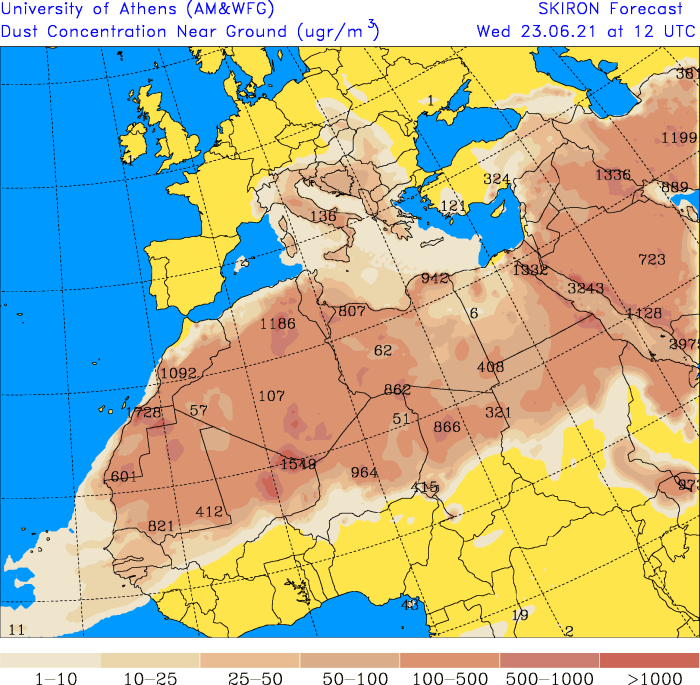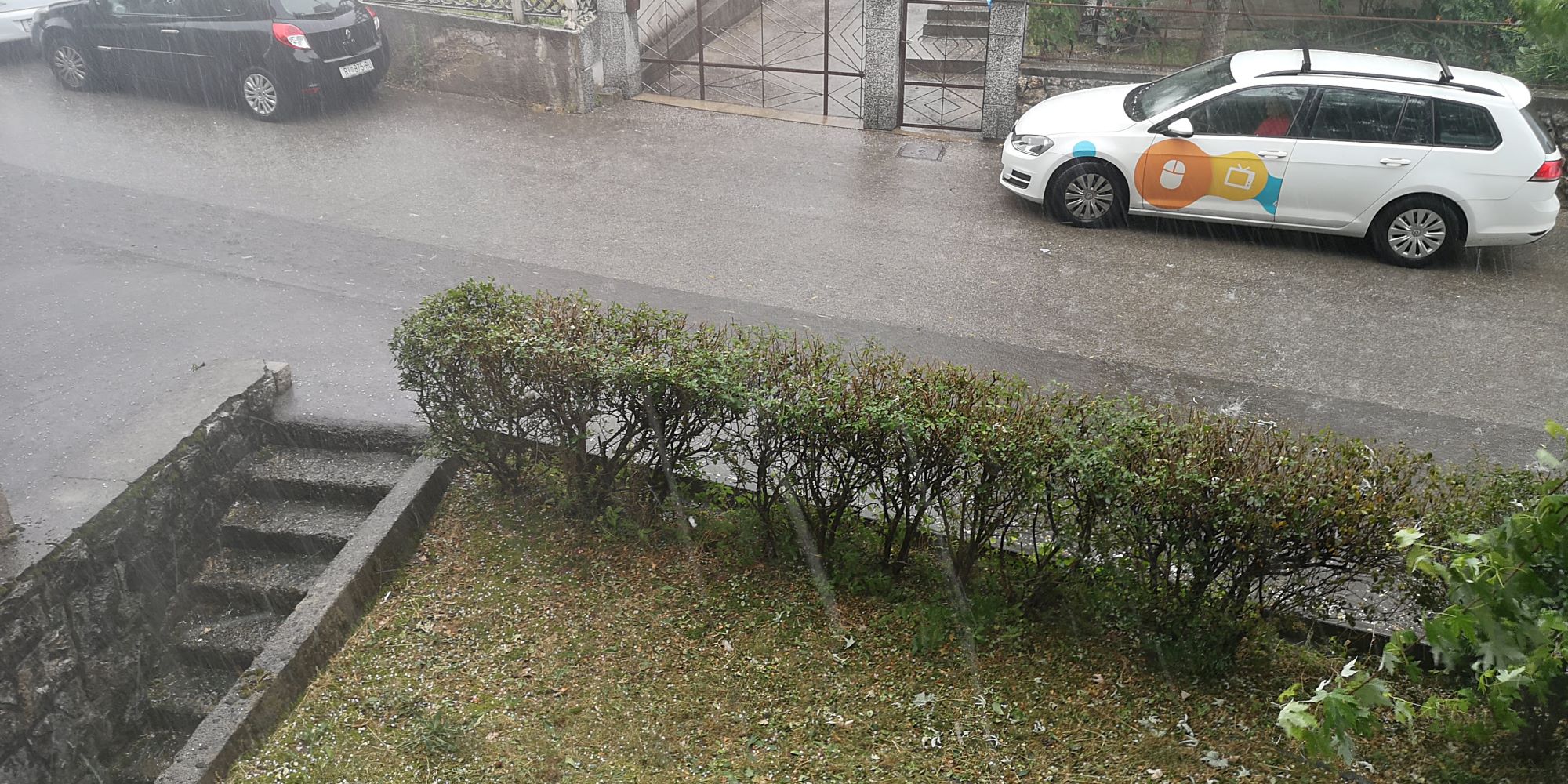Cold, wet and less sunshine: Spring 2021
The below-average temperatures from March to May are also reflected throughout spring. At 7.6 ° C, spring 2021 was 1.9 Kelvin below the mean (9.5 ° C) for the reference period 1991-2020.
Spring 2021 is the coldest since 2013 and is number 12 of the coldest springs since 1881. In the overall view, a very clear rise in spring temperature of 1.7 Kelvin can also be seen here.
| 1881-1910 | 1961-1990 | 1991-2020 | 2021 |
| 7,8 °C | 8,3 °C | 9,5 °C | 7,6 °C |
Rainfall
| 1881-1910 | 1961-1990 | 1991-2020 | 2021 |
| 172 l/m² | 205 l/m² | 177 l/m² | 190 l/m² |
Hours of sunshine
| 1951-1980 | 1961-1990 | 1991-2020 | 2021 |
| 459 h | 441 h | 497 h | 474 h |
The baseline days in spring 2021 show the average cooler temperatures. The 20 frost days for the WAST station are divided into 8 in March and 12 in April. Due to the situation, there was no more frost day at the VKTU* station. In general, the temperatures at the WAST* station are cooler and reach a minimum value of below 0 ° C, while the minimum temperature at the VKTU station is just above 0 ° C. The few summer days for both stations were registered in May.
*the station Köln –Turiner Straße (VKTU) is shown as an inner-city station, and on the other hand, the Warstein station (WAST) in Warstein
Cold and wet: May 2021
The weather was also rather cool in May, but there was an above-average amount of precipitation with correspondingly below-average sunshine.
Just like April, May was 10.9 ° C, well below the temperature of the reference period 1991-2020 (13.3 ° C) and thus follows on from 2020 and 2019. Compared to the total period since 1881, May 2021 is the coldest May 21st.
It was also the coldest May since 2011.
Overall, as can be seen in the table, the temperatures rose by around 1 Kelvin in May, despite the below-average temperatures of the last two years.
| 1881-1910 | 1961-1990 | 1991-2020 | 2021 |
| 12,2 °C | 12,4 °C | 13,3 °C | 10,9 °C |
Rainfall
| 1881-1910 | 1961-1990 | 1991-2020 | 2021 |
| 60 l/m² | 72 l/m² | 64 l/m² | 90 l/m² |
In addition to the above-average rainfall, this year's May had a below-average length of sunshine hours (202 hours) with 158 hours. May is the 13th month with the least sunshine on record. In general, however, May shows an increase in the number of hours of sunshine over the 30-year-old average.
| 1951-1980 | 1961-1990 | 1991-2020 | 2021 |
| 195 h | 190 h | 201 h | 158 h |
This shows the generally below-average temperatures of May 2021.
Sunny, dry, cold: April 2021
Initially warm temperatures under the influence of subtropical air were replaced by cold, northern currents in the rest of the month. April was sunny and dry, but also cold.
At 6.2 ° C, April was 3.3 Kelvin below the average for the new reference period 1991-2020. The last time such a large discrepancy was recorded was in 1986. After April in the previous year with 11.2 ° C was significantly above the average of the reference period 1991-2020, April 2021 was 5 K colder than April 2020. April 2021 was the 17th-coldest April since records began. The following table shows very clearly that despite this cold April 2021, the temperatures rose massively in the new reference period.
| 1881-1910 | 1961-1990 | 1991-2020 | 2021 |
| 7,6 °C | 7,9 °C | 9,5 °C | 6,2 °C |
Rainfall
| 1881-1910 | 1961-1990 | 1991-2020 | 2021 |
| 49 l/m² | 62 l/m² | 48 l/m² | 41 l/m² |
Sunshine
| 1951-1980 | 1961-1990 | 1991-2020 | 2021 |
| 154 h | 148 h | 174 h | 174 h |
The cold April can be concretely mapped using the distribution of the knowledge days for Cologne and Warstein. While there were no frost days for VKTU, WAST has 12 frost days. In March there was another summer day. April, on the other hand, has no summer days at either station. The fact that the maximum temperatures for both stations are below 10 ° also speaks for a cold April. Due to the location, WAST was overall significantly cooler than VKTU.
After extreme in February, back to normal: March 2021
Average temperatures, little precipitation and many hours of sunshine. This is how March 2021 can be briefly described. After a February with temperature extremes, it became average again in March.
At 5.8 ° C, the temperature in March 2021 was slightly above the average temperature of the reference period 1991 - 2020. An increase in temperatures was noticeable this year, especially towards the end of the month. Since the beginning of the recording in 1881 there has been a clear increase in the air temperature in March of almost 2 Kelvin.
| 1881-1910 | 1961-1990 | 1991-2020 | 2021 |
| 3,7 °C | 4,5 °C | 5,7 °C | 5,8 °C |
Rainfall
| 1881-1910 | 1961-1990 | 1991-2020 | 2021 |
| 62 l/m² | 71 l/m² | 65 l/m² | 59 l/m² |
Sunshine
| 1951-1980 | 1961-1990 | 1991-2020 | 2021 |
| 110 h | 103 h | 122 h | 142 h |
March was marked by fewer extremes.
Average: Winter 2020/2021
After December 2020 started a little too warm, January and February almost corresponded to the average temperature of the long-term reference period 1991-2020, so that there is a slight upward deviation of +0.6 ° C for winter 2020/2021.
| 1881-1910 | 1961-1990 | 1991-2020 | 2021 |
| 1,0 °C | 1,7 °C | 2,7 °C | 3,3 °C |
Rainfall
| 1881-1910 | 1961-1990 | 1991-2020 | 2021 |
| 190 l/m² | 223 l/m² | 237 l/m² | 228 l/m² |
Sunshine
| 1951-1980 | 1961-1990 | 1991-2020 | 2021 |
| 146 h | 151 h | 165 h | 160 h |




